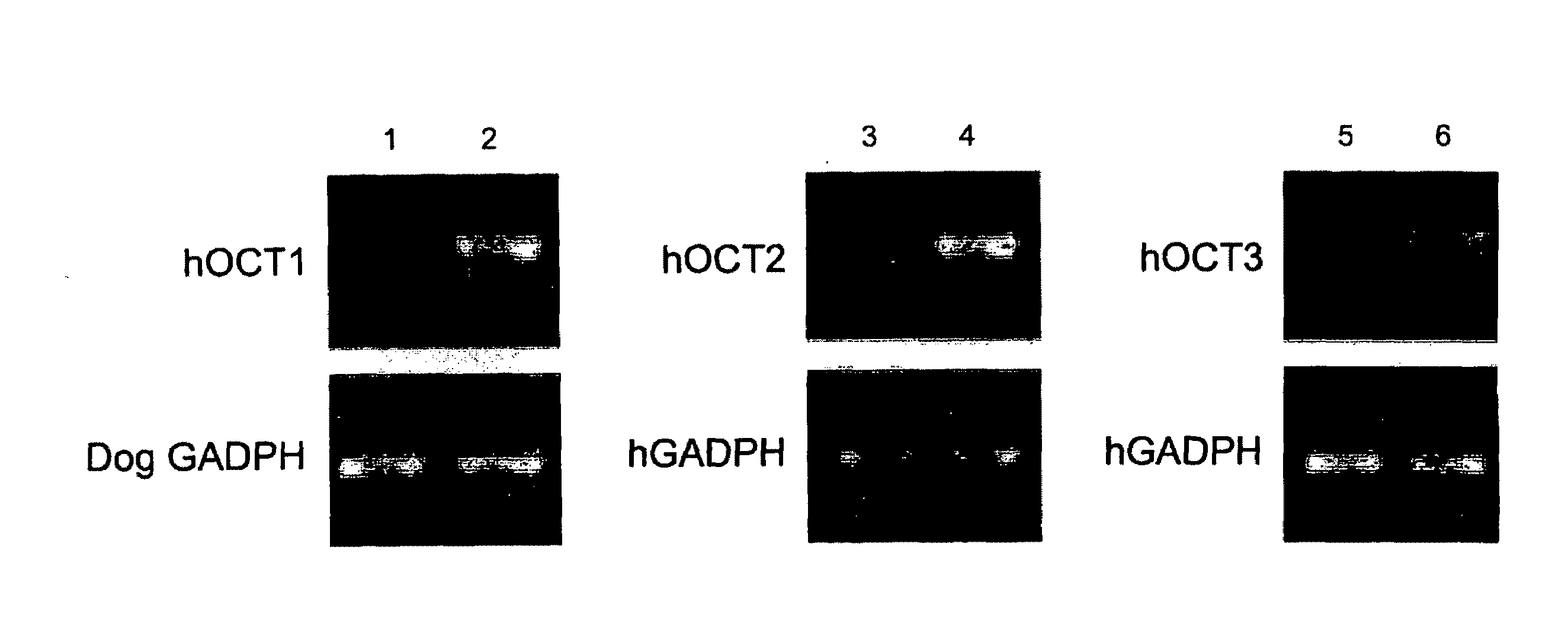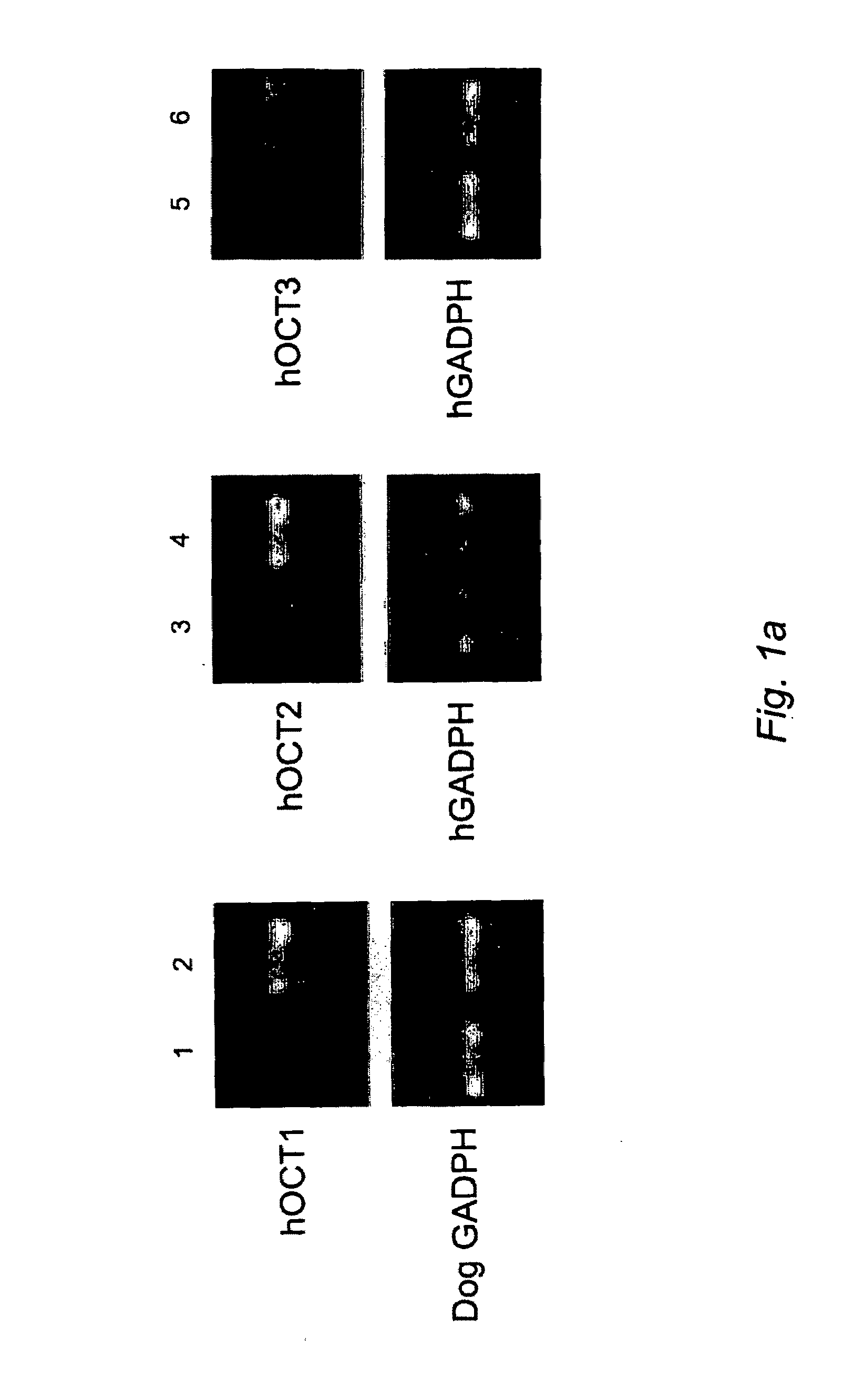Use of organic cation transporters for cancer diagnosis and therapy
- Summary
- Abstract
- Description
- Claims
- Application Information
AI Technical Summary
Benefits of technology
Problems solved by technology
Method used
Image
Examples
example 1
Organic Cation Transporters are Determinants of Oxaliplatin Cytotoxicity
[0152]This example characterizes the interaction of cisplatin, carboplatin, and oxaliplatin with human OCT1, OCT2, and OCT3. In particular, this example provides a determination of whether OCTs play a role in the cytotoxicity of these and related platinum-based drugs, a determination of whether interactions with OCTs contribute to the differential antitumor specificity of oxaliplatin versus cisplatin, and an understanding of the underlying chemical principles that determine these differences. The present study demonstrates for the first time that OCT1 and OCT2 play an important role in mediating the uptake and consequent cytotoxicity of oxaliplatin, but not cisplatin or carboplatin. Structure-activity relationship studies indicate that the 1,2-diaminocyclohexane (DACH) moiety of oxaliplatin is an important pharmacophore for its interaction with OCTs and that an organic component on the non-leaving portion of the...
PUM
| Property | Measurement | Unit |
|---|---|---|
| Molar density | aaaaa | aaaaa |
| Molar density | aaaaa | aaaaa |
| Molar density | aaaaa | aaaaa |
Abstract
Description
Claims
Application Information
 Login to View More
Login to View More - R&D
- Intellectual Property
- Life Sciences
- Materials
- Tech Scout
- Unparalleled Data Quality
- Higher Quality Content
- 60% Fewer Hallucinations
Browse by: Latest US Patents, China's latest patents, Technical Efficacy Thesaurus, Application Domain, Technology Topic, Popular Technical Reports.
© 2025 PatSnap. All rights reserved.Legal|Privacy policy|Modern Slavery Act Transparency Statement|Sitemap|About US| Contact US: help@patsnap.com



